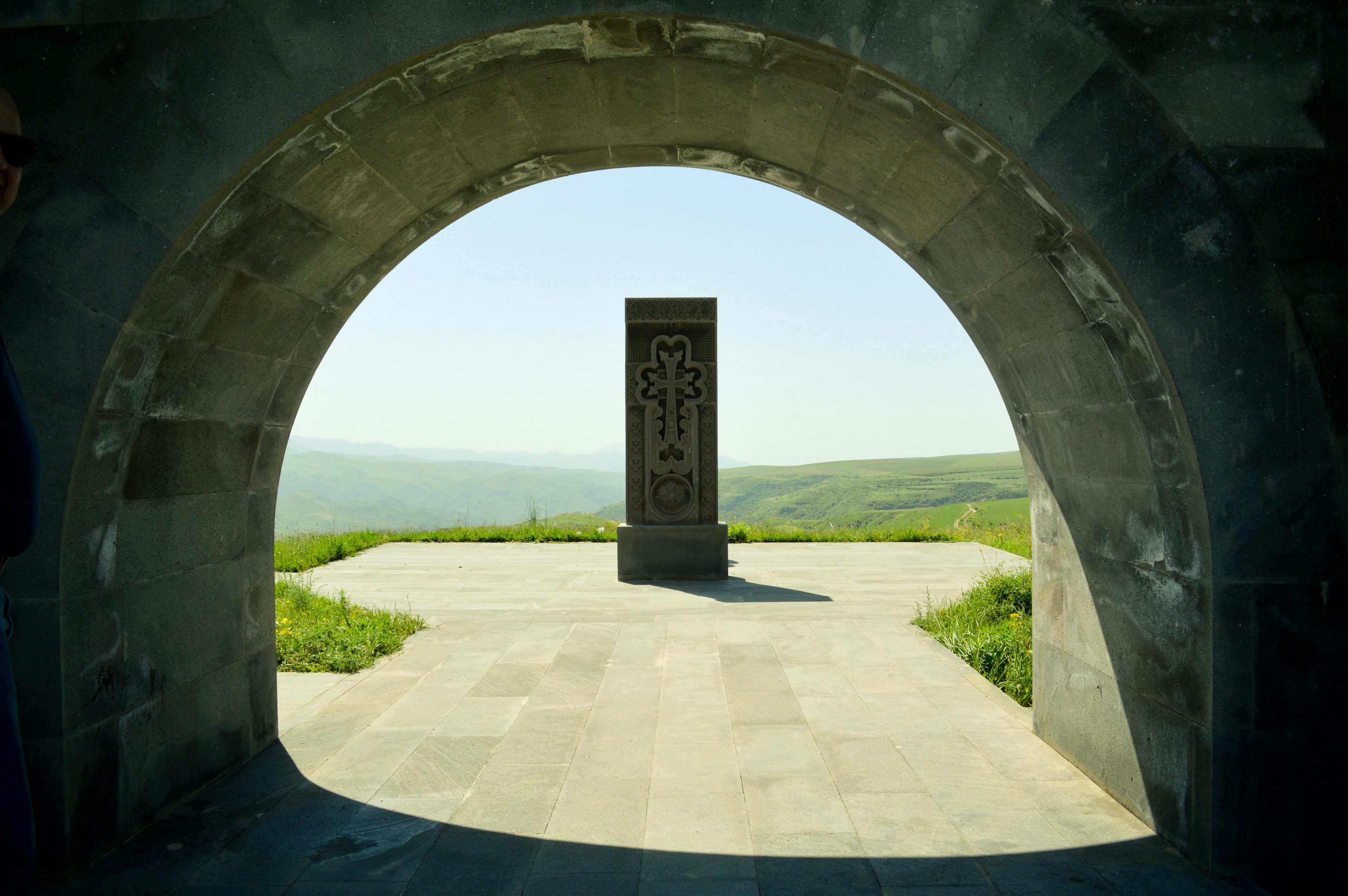Armenian photographer Knar Bedian took a trip to Nagorno-Karabakh, a once disputed territory in Azerbaijan that has now gained independence. She was able to travel on the Kelbajar route, a road with extremely poor conditions that connects Armenia and Nagorno-Karabakh. She got in touch with us to offer the world a glimpse of a place that most people haven’t heard of.
“Returning to Armenia was a chance to see our homeland and learn about our history first hand”

Knar Bedian: I’m completing my last year at Tufts University in Boston and am originally from Chicago. I went to Armenia because I am 100% Armenian, but my family has not lived in Armenia for 3 generations (my great grandparents fled because of the genocide). My parents have done a great deal to keep the culture alive in my brothers and I, teaching us the language, sending us to an Armenian camp over the summers, and helping us to get involved in an international Armenian youth organisation, of which I am still an active member.

The photos have some back story to them – firstly, they were all taken in Armenia and the surrounding region. For example, the one of the grilled meat was taken near the border of Iran, at a picnic we had at a remote border post. We went there with a former army commander, who explained to us and showed us the locations of the battles he fought (not too long ago) in the fight to win back the Nagorno Karabakh region.

“…the Kelbajar route, whose “roads” are in such poor condition that it is generally avoided”
The one with the mud on all sides is actually one of the roads we had to drive through to get to Nagorno Karabakh – the one with the winding road is that same road – the Kelbajar route, whose “roads” are in such poor condition that it is generally avoided (though it was on this route that I saw some of the most beautiful landscapes in my life.)

I knew, going in, that aside from the capital of Yerevan, most of Armenia is not as developed . I was surprised at little instances, such as, many of the tourist attractions (even those in more remote areas) had somewhat modern facilities (I didn’t encounter as many “toilets” that were simply holes in the ground as I had expected).

“Socially and culturally, I believe Armenia needs to work on issues of equality”
Socially and culturally, I believe Armenia needs to work on issues of equality, for example, the people are very opposed to homosexuality, and while women do have the right to vote and are equals in some sense, cultural traditions often create disadvantages for them, as well as expectations for what a woman “should” do which limits their freedoms. Domestic violence is also a rather large problem that most don’t feel is appropriate or necessary to discuss. Again, I was conscious of these issues but there were certainly times when you could feel the difference between their ideas of what’ s acceptable and the ones I’ve grown up with here in the States.

Knar Bedian – Armenian Roots 
Knar Bedian – Armenian Roots
While we were there, by chance, one of our friends is friends with a musician and instrument maker named Manouk Haroutyunyan. He’s an extremely talented cellist and we had the opportunity to visit his workshop. When I say workshop I mean, a small room in a shack-like home that was stuffed with dozens of instruments. At the time, a German cellist was visiting our friend and so we all went together to see his work space. She (the German cellist) had come in hopes that he would sell her a cello, since he is known for his skill in that craft. He played for us an instrument that is one-of-a-kind – he invented it himself and it is the only one in the entire world. The “Manjut” (Manouk’s “jut” / fiddle) as he has named it is similar to a cello, but smaller, and with five strings.
“Although renowned for his craftsmanship, he explained to us that he no longer wants to make instruments”

He performed for us, cramped in this small space as we sipped our teas, and it had a distinct timbre and sound that was very beautiful. He explained to us his choices in the kind of wood he used, where he got it from, and the time it took to put together his creation; it was only then that I fully understood why an instrument would cost so much.
Although renowned for his craftsmanship, he explained to us that he no longer wants to make instruments, as his hands have taken quite the beating and he no longer wants to consume his time making instruments as he misses playing them.
He regrettably had to tell the German cellist he had no instruments to sell her, but told her she could borrow his any time she would like. As a cellist myself, I was honored to see such a talented man perform on an instrument he himself created, and amazed at the fact that I am one of the few people on this Earth to hear creator and inventor of this instrument play the “manjut” in person. More so than that was the humble lifestyle of such brilliant performer and instrument maker, who (from what I know) is not widely known among Westerners.
